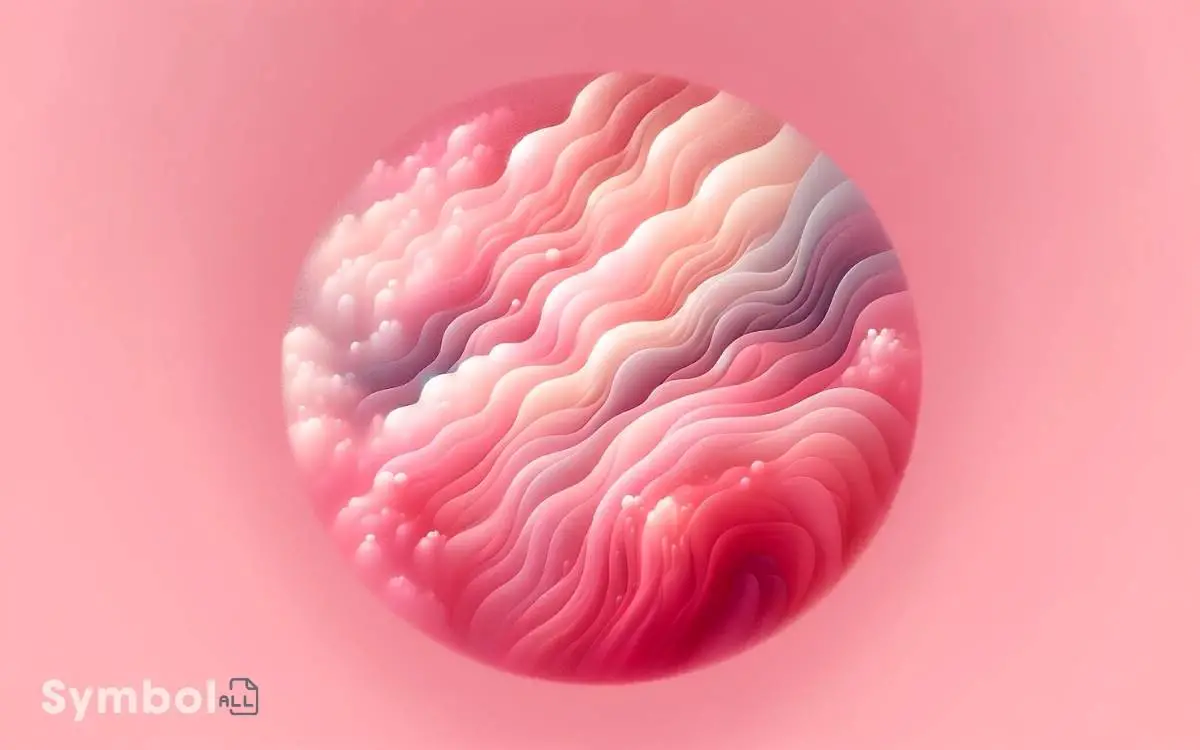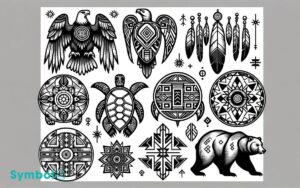What Does Color Pink Symbolize? Tenderness and Femininity!
You might see pink and think it’s just a color, but it’s a symbol brimming with history and meaning. Initially, pink represented power and prestige, accessible only to the wealthy. It has since evolved, embodying both femininity and rebellion.
Depending on where you’re at in the world, pink can signal everything from gentleness and love to strength and defiance.
It’s not just about gender norms anymore; pink’s versatility in design and fashion communicates identity and values, from soft pastels nurturing peace to bold neons shouting revolution.
Understanding pink’s spectrum of significance reveals a deeper dialogue about its place in our lives.

Key Takeaway
Historical Significance of Pink
Throughout history, pink has evolved from a color signifying power and prestige to one symbolizing tenderness and femininity, showcasing its dynamic and multifaceted significance in cultural contexts.
Initially, pink dyes were rare and costly, making garments of this color exclusive to the affluent. This association with wealth and status gradually shifted as dyeing techniques advanced, making pink more accessible.
By the 18th century, pink had become fashionable among both men and women in Europe, challenging previous notions of masculinity and femininity.
However, the 20th century saw pink firmly categorized as a feminine color, a notion that persists but is increasingly challenged today.
This journey reflects broader societal changes, illustrating how color perceptions are intertwined with cultural, economic, and social evolutions.
Pink in Cultural Contexts
You’ll find that pink’s symbolism varies greatly across different cultures, reflecting a tapestry of meanings that transcend its mere visual appeal.
While in some contexts, it’s associated with femininity and gentleness, in others, it represents rebellion and strength.
These global perceptions and historical associations underline the complexity and depth of pink’s cultural footprint, inviting a closer examination of its multifaceted identity.
Global Perceptions of Pink
The color pink carries diverse meanings across cultures, reflecting a spectrum of symbolism that ranges from femininity and innocence to rebellion and power.
You’ll find that in some parts of the world, pink is intimately linked with gender norms, often associated with girls and women, suggesting softness and nurturance. However, this isn’t a universal interpretation.
In other regions, pink breaks free from these confines, embodying strength, courage, and a bold defiance of societal expectations. Consider Japan, where pink blossoms signify the warrior’s life—ephemeral yet beautiful.
Such contrasts highlight how cultural contexts shape our perception of color, making pink a fascinating study in global symbolism. It’s a hue that defies simple categorization, urging you to look beyond surface associations to uncover deeper, culturally specific meanings.
Historical Pink Associations
Building on the dynamic global perceptions of pink, let’s explore its historical roots and how various cultures have woven this color into their traditions and values over time.
Pink’s associations are as varied as they’re fascinating, revealing much about societal norms and changes across eras.
- In Japan, pink has long been cherished, symbolizing the beauty and transience of life, illustrated by the revered cherry blossoms.
- European history saw pink oscillating between fashion statements among the aristocracy to symbolizing youth and innocence in art and literature.
- Indigenous cultures in the Americas used pink for its vibrant visibility, incorporating it into textiles and pottery, signifying connection and community.
These snapshots underscore pink’s versatile role in cultural tapestries, reflecting evolving attitudes towards gender, aesthetics, and societal values.
Emotional Associations With Pink
When delving into the emotional landscape of colors, it’s essential to point out that pink often evokes feelings of love, kindness, and nurturing.
This connection isn’t merely superficial; it’s deeply rooted in our psychological response to the color. Pink’s soft and gentle hue can calm emotions, creating an atmosphere of peace and tranquility.
It’s no coincidence that environments aimed at relaxation or compassion frequently utilize pink tones.
Moreover, pink’s association with love extends beyond the romantic, touching on a universal love that includes empathy and understanding.
This color’s capacity to soften the hardest of hearts and encourage a nurturing disposition speaks volumes about its powerful emotional resonance. Its ability to evoke feelings of calm, compassion, and introspection makes it a vital element in both art and psychology. The symbolism in the color purple, often associated with spirituality, wisdom, and balance, further deepens its emotional impact. By bridging the gap between the passionate energy of red and the tranquil nature of blue, this hue becomes a harmonious representation of emotional complexity and inner peace.
Essentially, pink doesn’t just represent feelings; it actively cultivates them, fostering a sense of connection and care.
Pink and Gender Identity
Pink’s association with gender identity has evolved considerably over time, reflecting societal shifts in how we perceive and assign colors to gender roles.
Initially, pink was seen as a color suitable for boys due to its perceived strength, while blue was considered more delicate and appropriate for girls.
However, this perspective flipped in the mid-20th century, positioning pink as feminine and blue as masculine.
- Historical fluidity: The changing associations of pink showcase the malleability of color symbolism in gender identity.
- Current challenges: Modern movements challenge traditional color assignments, advocating for a more inclusive understanding that transcends binary views.
- Personal expression: Pink has been reclaimed by various groups, including the LGBTQ+ community, to symbolize diversity and freedom in gender expression.
This transformation highlights the ongoing dialogue around gender, identity, and societal norms, urging us to reconsider the meanings we attach to colors.
Pink in Marketing and Branding
You’ve likely noticed how pink hues are strategically used in marketing to evoke specific emotions and connect with target demographics.
This color’s emotional impact can influence consumer perceptions, driving engagement and loyalty, particularly among audiences where gender targeting is pivotal.
Analyzing pink’s role in branding uncovers its power to shape consumer behavior and brand identity, highlighting its significance beyond mere aesthetics.
Emotional Impact
In marketing and branding, the color pink strategically evokes a spectrum of emotions, aiming to connect deeply with the target audience.
This color isn’t just a visual choice; it’s a tactical tool that brands employ to elicit specific feelings and reactions from their audience.
When you encounter pink in a brand’s palette, it’s worth considering the emotional impact it’s intended to have:
- Soothing and Calming: Pink often exudes a calming effect, inviting a sense of peace and serenity in the viewer.
- Excitement and Playfulness: In brighter shades, pink injects a lively vibrancy, signaling fun and playfulness.
- Warmth and Comfort: It can also convey warmth, creating a welcoming and comforting atmosphere that encourages positive associations with the brand.
Understanding these emotional cues can enhance how you perceive and interact with brands, revealing the strategic depth behind color choices in marketing.
Gender Targeting
Historically, marketers have often leveraged pink to appeal specifically to female audiences, embedding gendered perceptions and expectations into their branding strategies.
This choice isn’t essential; it’s deeply rooted in societal norms that associate pink with femininity, softness, and nurturing qualities.
You’ve seen it everywhere, from toy aisles segregated by color to the packaging of women’s beauty products.
What’s important to understand is the impact of these choices. They don’t just influence purchasing decisions; they shape cultural narratives around gender roles.
The Power of Pink in Fashion
Pink’s influence in fashion extends far beyond mere color choice, embodying a dynamic range of cultural and emotional significances that designers and wearers alike navigate with intention.
In the tapestry of fashion, pink serves as much more than a hue—it’s a statement, a mood, and a form of expression.
- Breaking Stereotypes: Pink challenges traditional gender norms, allowing for a fluid and inclusive fashion narrative.
- Emotional Resonance: It evokes feelings of compassion, love, and understanding, enriching the wearer’s emotional palette.
- Versatility in Design: From pastel to neon, pink’s vast spectrum supports a myriad of design aesthetics, from rebellious to refined.
Understanding pink’s power in fashion gives you a richer appreciation of its role not just in clothing, but in communicating identity and values.
Conclusion
You’ve ventured through the vibrant vistas of pink, pondering its profound historical evidence and cultural complexity.
You’ve felt its emotional embrace, unraveling its role in reshaping gender identity and its strategic sparkle in marketing mazes. Pink’s power in fashion isn’t just fleeting fancy; it’s a timeless proof of its tantalizing touch.
As you reflect, remember, pink isn’t merely a color; it’s a mesmerizing character in the canvas of life, painting perceptions with its passionate palette.






